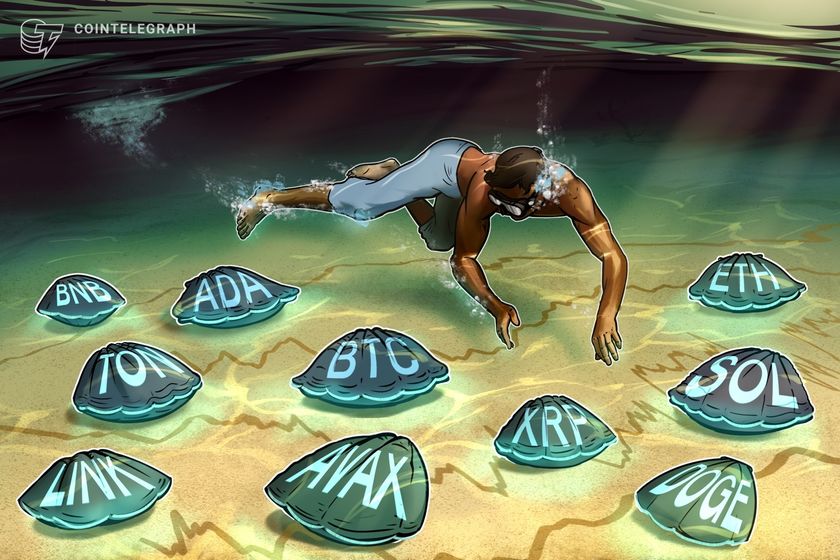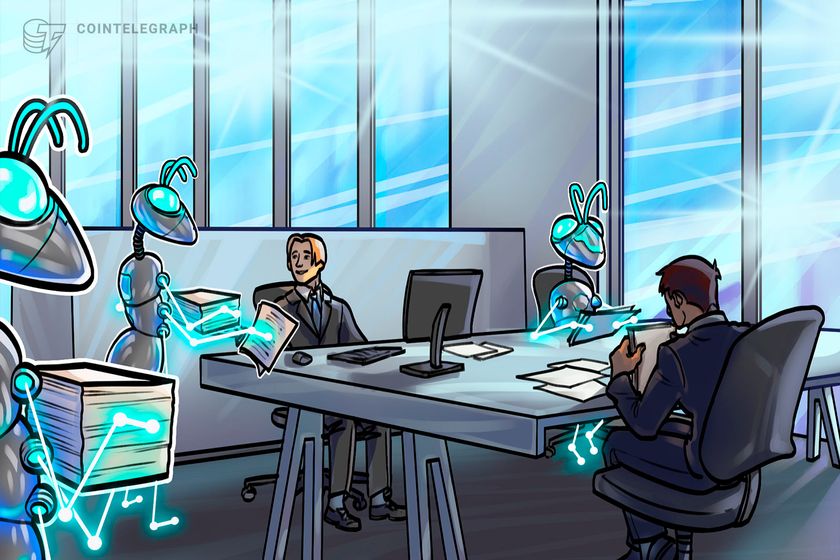
XRP purchasers back Ripple, arguing that it is not a security

Breaking down the ongoing SEC v. Ripple case clarifies the crucial meaning of it for the whole crypto industry.
On Dec. 22, 2020, the United States Securities and Exchange Commission filed a complaint against Ripple Labs. The complaint essentially alleged that Ripple had engaged in a multi-year, sustained practice of illegally selling unregistered, non-exempt securities in the form of its XRP tokens.
This complaint, having been filed on the last day of former SEC Chairman Jay Clayton’s tenure at the commission, led to a considerable volume of public commentary, as is not unusual for SEC litigation against major players in the crypto space. What is unusual about SEC versus Ripple is the reaction from a sizable segment of XRP purchasers.
Related: SEC vs. Ripple: A predictable but undesirable development
On Jan. 1, 2021, a group of XRP purchasers led by attorney John Deaton filed a petition seeking a writ of mandamus in the District of Rhode Island, asking the court to force the SEC to exclude their XRP tokens from the pending litigation against Ripple on the grounds that the plaintiffs had not purchased investment contracts. The petition argues that the SEC, under the leadership of then-chairman Clayton, abused its authority on a politically-motivated vendetta against Ripple. Regardless of Clayton’s motivations, the petition deserves closer analysis.
Public response to the petition
The public reaction to the SEC’s lawsuit was swift and powerful. Within days after the action was announced, the market capitalization for XRP had fallen an astounding 63%, losing about $15 billion in value. While a review of pricing data maintained by CoinMarketCap indicates that much of that value has recovered as the crypto market has exploded, as of this writing, XRP has not reached the price it was trading at before the litigation was initiated — as has been the case for the other top cryptocurrencies, such as Bitcoin (BTC) or Ether (ETH), which were up from $19,500 on Dec. 15, 2020, to more than $60,000 on March 14; and from $589 on Dec. 15, 2020, to more than $1,924 on March 13, 2021, respectively.
A large part of the problem, from the XRP purchasers’ perspective, is the completely understandable decision of a large number of crypto exchanges and platforms to delist XRP or to halt sales to U.S.-based customers. Binance.US, Bittrex, Blockchain.com, Coinbase, Crypto.com, eToro, OKCoin and Wirex (a crypto payments enterprise) are among more than 50 businesses that have suspended trading in XRP. Since regulated exchanges are not allowed to trade in unregistered securities, this is a rational decision for these businesses, but the consequence of these changes is likely to be devastating to Ripple and persons holding XRP tokens.
Unfortunately, the bad news just keeps coming. The drop in price and delisting of XRP has also been accompanied by the liquidation of XRP holdings by U.S.-based investment firms such as Grayscale and Bitwise Asset Management. Regardless of what happens, this is likely to make major investors cautious about XRP for the foreseeable future.
Deaton’s claims, and is XRP a security?
As mentioned above, on Jan. 1, 2021, a petition was filed in Rhode Island seeking to halt the SEC’s claims as to XRP owned by a group of purchases. John Deaton, an attorney with class action experience, claims in the petition that he and others like him did not buy XRP as an investment or consider it to be a security. Paragraph 45 of the complaint suggests that XRP is a currency, virtual currency or commodity, or utility token, and, therefore, not a security. In support of this conclusion, Deaton argues that XRP has a number of uses that essentially preclude it from being classified as a security.
The memorandum in support of the petition suggests that XRP has a range of legitimate functions, such as increasing the speed of international payments, acting as an alternative payment or a currency substitute, and serving as a medium for foreign exchanges. The petition claims that these use cases prove that XRP is not a security. Unfortunately, the SEC has never accepted the notion that utility by itself means that an asset is not a security. According to the SEC, the question is how the asset is marketed and the reasonable expectations of purchasers.
The SEC’s position in this regard is not unique to digital assets. For example, the SEC issued a release in 1969 explaining that while whiskey has utility as an alcoholic drink, a share of whiskey receipts can still be an investment contract:
“The purchaser of the whisky warehouse receipt is not being offered or sold such receipts with a view to acquiring and taking possession of the whisky. Rather, the purchaser in these cases is making an investment under an arrangement which contemplates that others will perform services which will increase the value of the whisky and will also eventually sell the whisky under circumstances which are expected to result in a profit to the purchaser-investor.”
This analysis applies even if the warehouse receipt gives the purchaser the right to acquire the whiskey. Similarly, rare coins have all kinds of utility. They can be a collector’s item, as well as a store of value or even a medium of exchange. However, the sale of coins, especially when combined with services such as assistance in selecting and reselling when desired, can also be an investment contract, again without regard to whether the purchaser actually takes possession of the asset and could display or otherwise use it.
In the case of the XRP token, the utility that is available is not, in and of itself, sufficient to ensure that the token falls outside the definition of an investment contract. Instead, if you parse through the annoyingly complicated Howey Test, there is an argument to be made that these assets are indeed securities notwithstanding Deaton’s allegations.
Does XRP fall within the Howey investment contract test?
The Howey Test requires that there be a payment of money or something of value, in a common enterprise, where the purchaser is expecting a profit, based on the essential managerial or entrepreneurial efforts of others. Most of those elements are indisputably present in the case of XRP, and the last is at least arguably present.
Purchasers buy XRP for fiat or other convertible digital assets or sometimes acquire them by providing services. All of these are things of value that satisfy the first element of the test. Moreover, the fortunes of the company and all of the purchasers rise and fall together, as the success of the XRP token itself rises and falls.
Paragraph 56 of Deaton’s complaint, in fact, bemoans the fact the drop in price caused by the SEC’s action resulted in “multi-billion-dollar losses of innocent third parties.” This is only possible because the fortunes of everyone are tied together along with the successful development of XRP. Finally, the profitability and success of XRP are clearly due to Ripple’s efforts. Even an examination of the use cases suggested by Deaton points to this.
XRP’s numerous use cases
In the memorandum in support of the petition, there are numerous allegations about use cases for XRP that explicitly depend on the efforts of Ripple and individuals associated with the company:
- Paragraph 78 explains how Ripple’s “partner XAGO” will use XRP to move money across Africa.
- Paragraph 84 touts the efforts of SBI/Ripple Asia’s CEO to have the next World’s Fair in Japan accept only XRP as payment.
- Paragraph 95 recites Ripple’s investment in MoneyTap, a subsidiary of SBI, and SBI Asia’s decision to use XRP.
- Paragraph 105 discusses Ripple’s partnership with Novatti to enable real-time transfers between Australia and Asia.
- In paragraph 115, the memorandum explains how Ripple’s decision to hire a Goldman Sachs former executive has improved the prospects for XRP’s role in FX markets.
- Efforts of Ripple CEO Brad Garlinghouse to improve Ripple’s role in central bank digital currencies are referenced in paragraphs 135 and 136.
The common thread running through all of these allegations is Ripple’s involvement in the process of promoting and developing XRP and its functionality.
Deaton’s petition suggests that none of this matters because many of the named petitioners and thousands of other purchasers had never heard of the Ripple (the company), or its executives, until after the SEC’s suit. However, the Howey Test does not require that purchasers know the identity of those managing the asset; if the purchasers are waiting for others to provide the entrepreneurial efforts and experience, the element is satisfied.
In addition, paragraph 163 of the memorandum supporting the petition explains that some of those who had heard of the company were aware that:
“Ripple executives and former executives have publicly stated that XRP was not designed for retail investors. These Ripple executives have stated that XRP was not designed to pay for a cup of coffee. Instead, it was designed for the banks and money service providers.”
Unfortunately for the petitioners, this does not support the conclusion that the petitioners hope for. Certainly, for those retail purchasers who knew that XRP’s functionality was not designed for them, the only motive that makes sense for a decision to buy the tokens anyway would be the hope that the tokens would appreciate in value. That reality is acknowledged in paragraph 164, which tacitly admits that “some investors may acquire XRP with the hope that it will increase in value.” That satisfies the most debatable element of the Howey Test.
Despite the presence of a number of potential use cases, the reason most retail investors acquired XRP is likely the belief that it was going to go up in value. If they had purchased it for any of the uses listed in Deaton’s complaint, they could have used it. If they bought thousands of tokens with no such use in mind, the only realistic explanation is that it was being purchased as an investment, in the hopes of appreciation. That conclusion is bolstered by the petition’s repeated allegations about the loss of billions of dollars in value, which would not have been needed if the only XRP purchases had been those that were needed in order to access its functionality.
Does this justify the SEC’s action?
While the foregoing analysis indicates substantial flaws with the arguments in Deaton’s petition and also supports the conclusion that XRP really is an investment contract, this should not be taken as justification for the SEC’s decision to bring an enforcement action against Ripple at this point in time. The entire thrust of the SEC’s complaint is that Ripple has repeatedly violated the U.S. Securities Act of 1933 by selling unregistered securities in a continuous distribution that has been ongoing since 2013.
Ripple’s answer to the SEC’s complaint accurately points out:
“The SEC filed this Complaint 8 years after XRP was created, 5 years after the DOJ and FinCEN characterized XRP as a virtual currency, and after more than 2½ years of investigation during which the SEC allowed Defendants to continue to distribute XRP, allowed the XRP open market to grow, and allowed millions of market participants to rely on the free and efficient functioning of that market.”
The reality is that the choice by the SEC to bring an enforcement action at this late date could cripple the United State’s ability to participate in a growing industry or influence the direction of its growth. In addition, it seems profoundly ironic that in an effort that is ostensibly designed to protect investors, the commission is taking an action that does indeed cause them billions of dollars in losses. Treating XRP as a security sets a precedent potentially subjecting thousands of exchanges, market-makers and others in the crypto markets to oppressively burdensome regulatory requirements not just with regard to XRP but potentially other widely-held cryptos as well.
Deaton’s petition ascribes a wide range of improper motives to Clayton, which this comment does not address. Regardless of why the lawsuit was initiated, it is clearly one of the most, if not the most, important crypto case filed to date, and it clearly poses the possibility of undesirable outcomes. Perhaps Gary Gensler, in his probable role as SEC Chairman, can weigh in on this, and if nothing else, influence settlement discussions to minimize negative consequences from the suit.
In the meantime, it is critical that entrepreneurs do not fall into the trap that seems to have convinced Deaton and the other named plaintiffs. The existence of some functionality for a crypto token, whether as a currency, commodity or “utility token,” is simply not enough to prevent a digital asset from being treated as a security under the Howey Test.
The views, thoughts and opinions expressed here are the author’s alone and do not necessarily reflect or represent the views and opinions of Cointelegraph.
The opinions expressed are the author’s alone and do not necessarily reflect the views of the University or its affiliates. This article is for general information purposes and is not intended to be and should not be taken as legal advice.
Go to Source
Author: Carol Goforth









